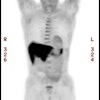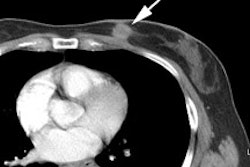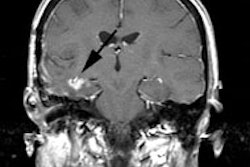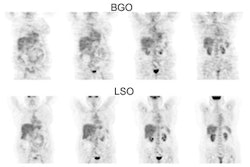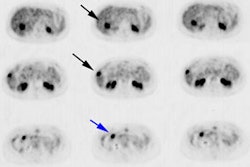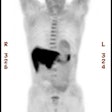J Clin Oncol 2001 Aug 1;19(15):3516-23
18fluorodeoxyglucose positron emission tomography to detect mediastinal or
internal mammary metastases in breast cancer.
Eubank WB, Mankoff DA, Takasugi J, Vesselle H, Eary JF, Shanley TJ, Gralow JR,
Charlop A, Ellis GK, Lindsley KL, Austin-Seymour MM, Funkhouser CP, Livingston
RB.
PURPOSE: To determine the prevalence of suspected disease in the mediastinum and
internal mammary (IM) node chain by 18fluorodeoxyglucose (FDG) positron emission
tomography (PET), compared with conventional staging by computed tomography (CT)
in patients with recurrent or metastatic breast cancer. PATIENTS AND METHODS: We
retrospectively evaluated intrathoracic lymph nodes using FDG PET and CT data in
73 consecutive patients with recurrent or metastatic breast cancer who had both
CT and FDG PET within 30 days of each other. In reviews of CT scans, mediastinal
nodes measuring 1 cm or greater in the short axis were considered positive. PET
was considered positive when there were one or more mediastinal foci of FDG
uptake greater than the mediastinal blood pool. RESULTS: Overall, 40% of
patients had abnormal mediastinal or IM FDG uptake consistent with metastases,
compared with 23% of patients who had suspiciously enlarged mediastinal or IM
nodes by CT. Both FDG PET and CT were positive in 22%. In the subset of 33
patients with assessable follow-up by CT or biopsy, the sensitivity,
specificity, and accuracy for nodal disease was 85%, 90%, and 88%, respectively,
by FDG PET; 54%, 85%, and 73%, respectively, by prospective interpretation of
CT; and 50%, 83%, and 70%, respectively, by blinded observer interpretation of
CT. Among patients suspected of having only locoregional disease recurrence (n =
33), 10 had unsuspected mediastinal or IM disease by FDG PET. CONCLUSION: FDG
PET may uncover disease in these nodal regions not recognized by conventional
staging methods. Future prospective studies using histopathology for
confirmation are needed to validate the preliminary findings of this
retrospective study.
